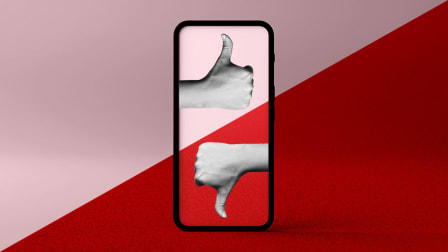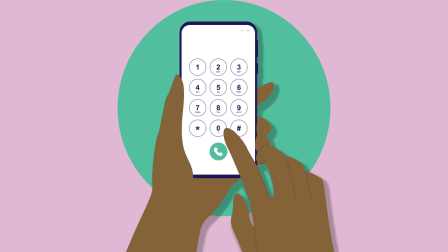Is There a 5G Network Near You?
In many cities, the answer is yes. Here's where you can find it, plus updates on new 5G phones.
When you shop through retailer links on our site, we may earn affiliate commissions. 100% of the fees we collect are used to support our nonprofit mission. Learn more.

The major U.S. carriers have been heralding the speed of 5G service for a good three years now, each laying claim to the nation’s best 5G network. And yet, for the average consumer, it’s often hard to find a 5G signal, much less revel in the technology’s benefits.
At this point, it’s safe to say we’re not going to be downloading full-length movies in 5 seconds flat anytime soon. And that means the instantaneous response times required to harness the tech for robotic surgery and the safe passage of self-driving cars are a ways off, too.
But you may notice some benefits the next time you find yourself in a baseball stadium packed with fans vying to upload their selfies to Instagram. In fact, you don’t even have to own a 5G phone to note the difference. That’s because 5G service offers greater network capacity, likely absorbing large chunks of the crowd, while you press on in the suddenly more spacious land of 4G.
5G Networks
AT&T
AT&T includes 5G service in all of its unlimited data plans. Consumers who use the company’s budget-priced Cricket Wireless service can get 5G access, too, provided they have a compatible phone and plan.
Rather than listing all the 5G cities and towns in its network (more than 14,000 at last count), the company provides a coverage map that you can search by entering your address.
T-Mobile
T-Mobile includes access to its 5G network in all service plans. And the acquisition of Sprint in 2020 boosted the company’s 5G footprint. The 5G service doesn’t quite reach everyone yet, but the company says its coverage is the largest in the nation, compared with AT&T and Verizon; it has a presence in all 50 states. This map provides specific details.
Verizon
All Verizon service plans include access to its nationwide 5G network. But for the faster Ultra Wideband coverage, you have to sign up for a Play More, Do More, or Get More unlimited plan. Play More and Do More plans start at $45 for one line, while Get More will cost you an additional $10 per month.
5G Phones
Apple
Apple’s first 5G-compatible models arrived in the iPhone 12 series line introduced in 2020. The middle-of-the-pack battery life didn’t impress our testers, but the phones’ cameras and sharp OLED displays earned top marks.
The iPhone 13 models performed better in our battery tests while maintaining the iPhone’s reputation for great photo and video quality.
For the new iPhone SE, Apple didn’t skimp on 5G capability, despite the phone’s modest $430 price.
Samsung
Samsung has almost too many 5G smartphones to count. All but one of the 15 models from the manufacturer in our ratings have the technology. That’s the $120 Galaxy A03s introduced this year.
The company helpfully inserts “5G” in model names to show which ones have the hardware required for 5G access.
If you want a large display and stylus support, look to the Galaxy S21 Ultra 5G or the Galaxy S22 Ultra 5G. Both have 6.8-inch OLED displays and start at $1,200. The S22 Ultra has a built-in stylus (as opposed to the optional $40 S Pen for the S21 Ultra), but it performed slightly poorer in our battery tests.
For a budget option, consider the $400 Galaxy A42 5G, which has a 6.6-inch display and very long 49-hour battery life. The trade-off for this price is photo and video quality that’s just average.
There’s also the Galaxy Z Flip 5G, $1,200, and Galaxy Z Flip3, $1,000, which add 5G connectivity to Samsung’s foldable phones. And for $700, you can buy the Galaxy S21 FE, a sort of pared-down version of the Galaxy S21.
The latest Pixel phones also come with the hardware required for access to 5G. This includes the Pixel 6, $600, Pixel 6 Pro, $900, and the Pixel 5a, $450. The Pixel 6 models earned a recommended label from CR’s testers, while the Pixel 5a is a CR Best Buy.
So how are they different? The Pixel 6 features a 6.4-inch display, 34-hour battery life, and two rear cameras (main and ultra-wide). The larger, 6.7-inch Pixel 6 Pro has a shorter 31.5-hour battery life and three rear cameras (main, zoom, and telephoto). Both are powered by Google’s custom-built processor called Tensor, which the company says is “the fastest, smartest, and most secure in Pixel phones yet.”
The 5a, meanwhile, has a 6.3-inch display and impressive 43.5-hour battery life. It rated very well when it came to still image and selfie image quality, although video quality rated just Good.
Taking everything into consideration, all three Pixel phones rated Very Good overall in CR’s tests.
OnePlus
The OnePlus 9 and 9 Pro are two of our top-rated phones. The $600 OnePlus 9 actually did better in our testing than the slightly fancier 9 Pro, mainly because it scored better when it came to battery life. The 9 lasted a decent 33 hours in our testing, while the 9 Pro logged just 25 hours.
On the flip side, the 9 Pro features slightly better cameras, which OnePlus at least partly credits to the partnership it formed with the photography company Hasselblad.
There’s also the earlier OnePlus 8T, which starts at just $400. It has the shortest battery life of the three, at 23.5 hours, but that’s still enough juice to last about a day.
Sony
The Xperia 1 III, which costs $1,000, doesn’t rise to the level of Samsung’s top 5G phones, but it earned a Very Good rating overall from our testers. It has a great 6.5-inch OLED display and cameras that received Very Good ratings for still image and selfie image quality. Battery life is decent, at 33.5 hours.
The Xperia 5 III, which also sells for $1,000, ranks at the bottom of the list of phones that CR recommends, with only the $1,200 Galaxy Z Flip below it. Still, our testers gave it Excellent ratings for durability, sound quality, and speedy performance. The battery logged 35 hours in our testing.



















